Crafting, implementing and refining a data strategy can seem a daunting, yet essential task. But it need not be that way.
Rather than tackling it as one big project (a Horse Sized Data Duck), organisations should instead break their data strategy down into individual, focused efforts to demonstrate iterative improvement (Duck Sized Data Horses).
In this article, the aim is to explain how to divide your data strategy, prevent future challenges from arising and explore the vital shift in mindset and company culture that will see tangible changes in how you both utilise and optimise your data.
The origin of a Horse Sized Duck Data strategy
This whole idea of Ducks and Horses stems from the real-life problems that have been encountered whilst working with customers and businesses across the UK. And irrespective of their industry, data conversations all start in a similar sort of place – the boardroom.
The world is a challenging place; prices are going up and competition is rife. As a result, boardrooms are full of conversations about how companies can respond and react to the changing climate.
From a data perspective, when they are having these boardroom conversations, they are typically looking at whole entities. This is where the problem starts. Because as they discuss data strategy, they introduce the Horse Sized Data Duck.
There is no doubt that an overarching data strategy is a very, very valuable thing; yet people almost always get it wrong. This stems from a belief that an organisation needs a strategy immediately and therefore requires a substantial cheque writing to make it happen.
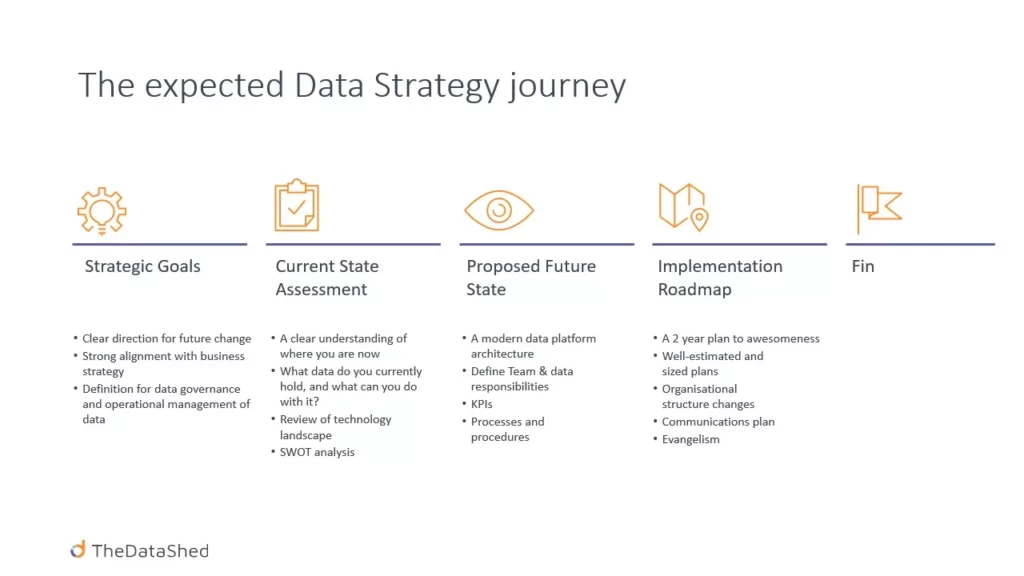
And in the process of creating such a strategy, the expectation is that you would first define your strategic goals. From here, these goals would influence discussions around where you want to get to, what data and technologies you already have and what the internal capabilities look like.
Then, you envision your proposed future state and implement a two-year project plan to make it happen before landing at the finish line upon completion.
Except, spoiler alert, there isn’t one. And herein lies the problem of the Horse Sized Data Duck.
Organisations attempt to tackle the issue in a linear fashion, slowly moving between phases of an ever evolving, constantly morphing entity which creates huge risks and significant challenges.
But, if you have the luxury of choice, this need not be the case.
Understanding your data capacity
Below is an imaginary funnel through which we can send a Horse Sized Data Duck and, at the end, be left with 100 Duck Sized Data Horses.
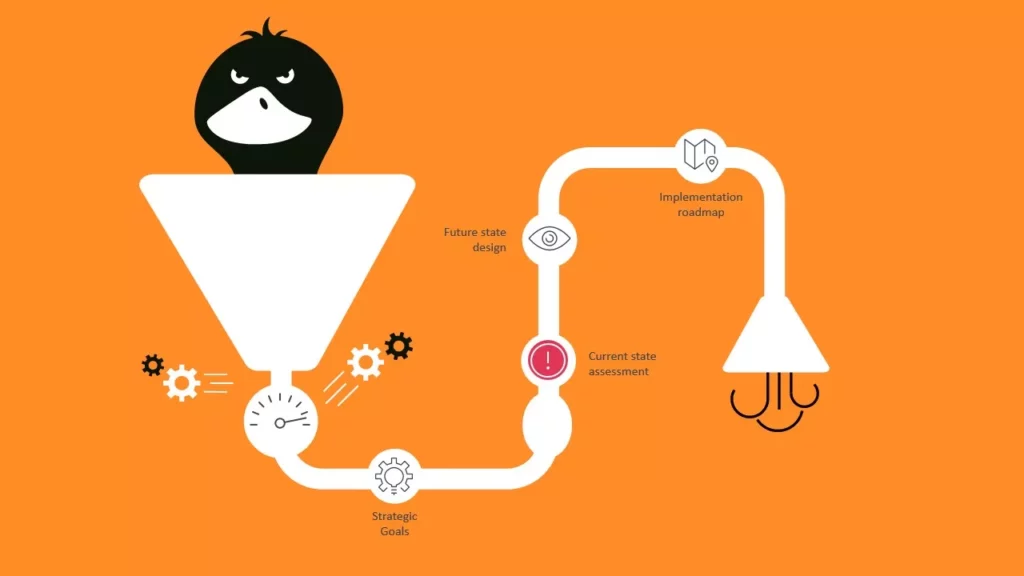
At the top is your organisation’s capacity for idea generation and consideration of strategic direction. What follows is a comparatively thin pipe, which is representative of your organisation’s actual capacity for implementing change.
Due to this dramatic difference in capacity, it stands to reason that unless you’re going to stop everything, and sacrifice profits and revenues, there is only a finite ability to deliver organisational change.
Question is, why do people get stuck? Often, the first-place companies typically come across roadblocks is during the current state assessment. This tends to be a consequence of an inability to move quickly, therefore hampering the ability to act.
For example, where an organisation had scheduled 6-8 weeks to define their data model, the process was still ongoing nine months down the line with no sign of stopping.
The problem was that this transformation project was so substantial that it was fundamentally changing the circumstances beneath their feet. They couldn’t model it, but at the same time, they couldn’t move past it.
As a solution, in such a case the company should instead establish what is enough in terms of data modelling for this type of project. In other words, rather than drilling down into the detail, they should zoom up and establish broader entities.

At this point, there is no need for specifics to move forward. Simply an understanding of the context and bounds of that domain.
With this alternative approach, you find the things that fit in the bucket and the things that don’t – the latter being those that will likely cause problems due to legacy complexity or countless iterations.
If you’re involved in the current state assessment, don’t get lost in the detail because it will fundamentally slam the brakes on.
Implementing the data strategy roadmap
The subsequent stage, roadmap implementation, can also become very problematic for a number of reasons. Considering another example, challenge can arise when a future state design includes the shape of team before they are ready to have them in place.
Using this scenario, it is totally understandable, especially when the proposed structure is sensible, and logical for a data team. But because the project was approached as a Horse Sized Data Duck, there wasn’t anything in place for the Data Architects and Data Science people to solve. They had no way of operationalising their outputs.
Rather than continuing on this conventional funnel path, the Duck Sized Data Horses approach would instead propose working on much smaller experiments, where the data science team focused solely and exploring how they can understand their analysis and enact change as a result.
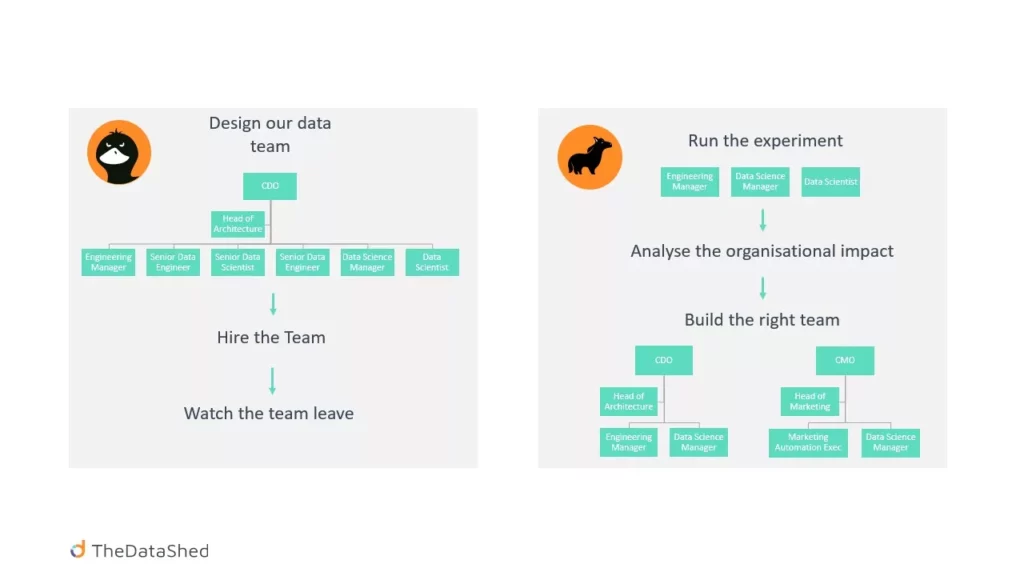
Having looked at the organisational impact of this change, the business could then identify that the optimal implementation structure was completely different to that which had been theoretically mapped out before.
This may not work every time, but it will ensure no resources are wasted on planning for something that doesn’t work in reality.
Achieving the alternative – Duck Sized Horses Data strategy
Hopefully, the picture should be clearing as to the benefits of a Duck Sized Data Horses approach. At the same time, you’d rightfully be wondering, how could I prevent this Horse Sized Data Duck from emerging in my organisation?
Well, there’s a few simple techniques you can start to use that allow you to make the shift, and most of all undertake a change in mindset to eradicate any Horse Sized Data Ducks.
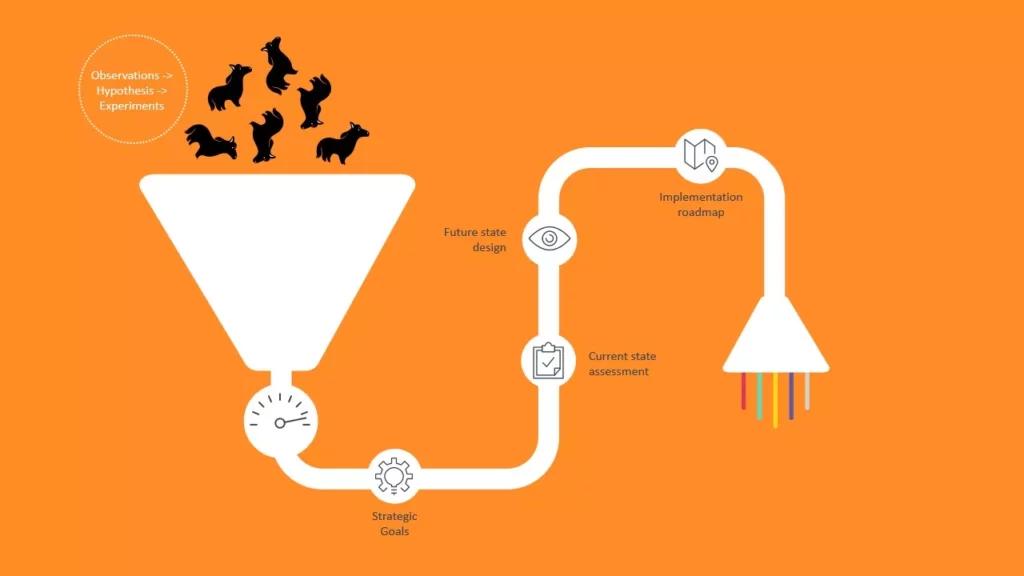
Organisations often think “if I know X about a customer, I can give them more personalised products or services”. This works in theory but if you’ve got no evidence, no actual basis for that assumption, its nothing more than a guess.
So how do you tackle this? By encouraging customers to shift from these assumptions into stating observations.
Imagine your data says customers buy something in month one, 12% buy something again that same month and then they never buy again. These are the facts.
An assumption could be that by bundling products into one purchase for the customer saves on shipping costs and drives greater margins. Again, a total guess as you don’t know the reasoning behind the behaviour.
By contrast, an observation would be taking these established facts and building separate hypotheses. From here, companies can build a theory around the patterns rather than assume they know the answers right from the off.
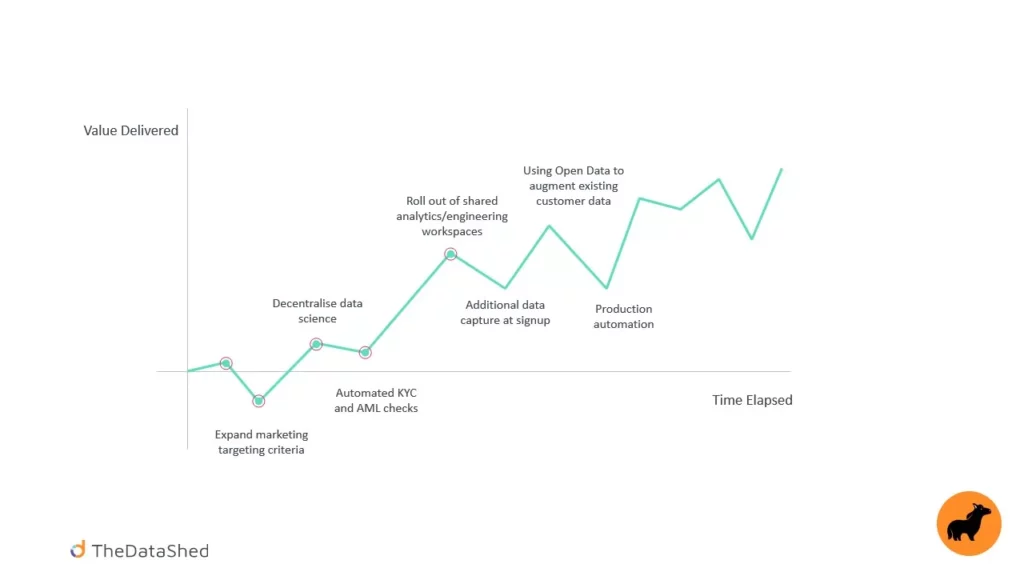
To this end, if you want to analyse something, you need to have the technology to do it – not to mention the capability and understanding of how to deliver the end goal.
And if testing these hypotheses is an unknown number of £50,000 cheques rather than being a one off £2 million cheque, that makes a big difference. Albeit challenges around demonstrating ROI remain.
But if you start to use this approach, and start to use experiments to test observations, you get very good at showing your successes and your failures. It’s yet another mindset shift, that when something doesn’t work, you’ve still learned something as an organisation,
And most importantly, the more you approach these things in small chunks, the more the organisation starts to build up the muscle memory of how to tackle a data problem.
The expectation that this data strategy implementation is going to take a mere two years and afterwards you’ll never do it again is beyond unrealistic.
Instead, it will continue to change, and, as a result of your new approach, your organisation will keep expanding, changing and adapting.
Practical enhancements to ongoing data strategy
In summary, becoming exceptional at handling data projects, and embracing consistent change in the organisation, is a key outcome to try and reach.
If you can, pause for a moment to reflect on your data strategy and consider how to implement the following changes:
- Stop making assumptions
- Think in £50,000 mini projects rather than one off £2 million monoliths
- Force experiments through the whole process to test hypotheses
- Build up organisational muscle memory for delivering data change
- Continually measure success and failure
With data, there is no end. It will continue to change as your organisation changes. And that doesn’t always mean the modern thing is the right thing. If there’s nothing wrong with a piece of technology, you’re using that was built 10 years ago, chances are it’s the right one for the organisation.
What does matter, is your mindset for tackling data and understanding how best to optimise and equip your organisation to harness it.
This blog was originally delivered as a talk by The Data Shed co-founder, Ed Thewlis, entitled “Why I’d rather fight 100 Duck Sized Data Horses than 1 Horse Sized Data Duck”.


